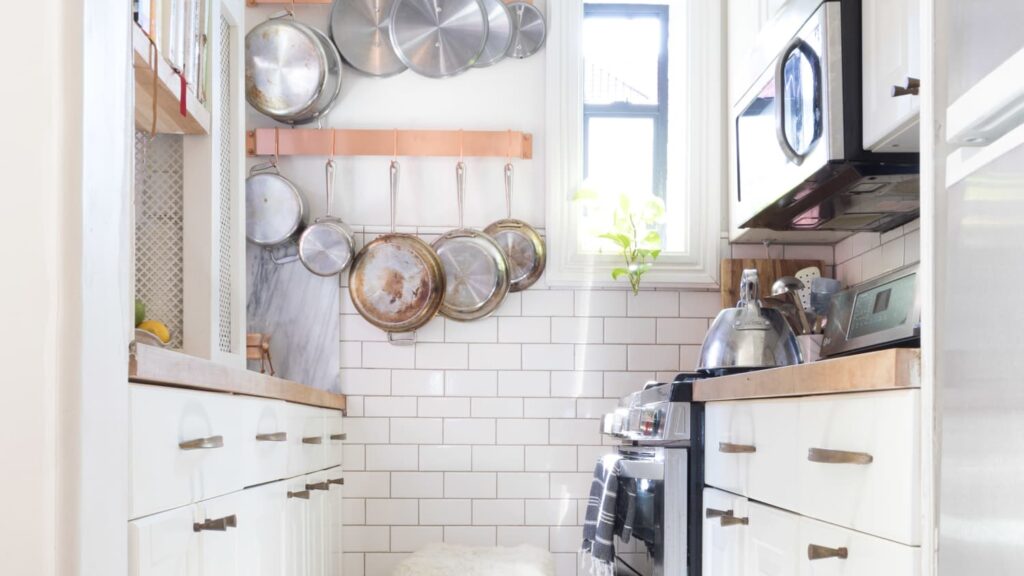Are you tired of digging through a cluttered pantry to find what you need for dinner? Do you feel your kitchen could be more organized, no matter how often you clean it?
Well, fear not! Organizing your kitchen pantry doesn’t have to break the bank. In fact, with a few simple tips and tricks, you can create an efficient and organized space without spending a fortune.
Say goodbye to chaos in the kitchen and hello to stress-free meal prep with our budget-friendly solutions for organizing your pantry.
How to Organize Your Kitchen Pantry on a Tight Budget
If you’re looking to organize your kitchen pantry on a tight budget, you can use a few tricks:
- Start by clearing out any expired or unwanted food items. This will make room for groceries that will last longer and be more useful in the long run.
- Create labeled sections for cereal, snack foods, spices, baking supplies, and condiments. This way, you’ll know exactly where everything is stored without searching through racks and shelves.
- Keep a close eye on your grocery budget and buy only what you need rather than purchasing unnecessary items.
By following these tips, you can organize your kitchen pantry without breaking the bank!
How to Shop for Grocery Supplies
When it comes to grocery shopping, every penny counts. But with a little creativity and some basic organization skills, you can stretch your grocery budget to cover all your needs without sacrificing quality or flavor.
Here are six tips for shopping for groceries on a shoestring budget:
1. Shop the perimeter of the store. Grocery stores typically sell food in bulk near the center of the store, where prices are often higher than closer to the perimeter. This means that by shopping around the edges of the store, you can save money on groceries while still getting everything you need.
2. Stick to lean protein and vegetable options when possible. Lean proteins like chicken breast and fish filets cost less than meat items with lots of fat and calories, and they’re also more filling, so you’ll likely eat less overall. Vegetables are also less expensive per serving than processed foods like potato chips or candy bars.
3. Stock up on staples like grains, legumes, canned goods, and boxed foods. These items will last longer if you buy them in bulk, saving even more money in the long run.
4. Make use of coupons judiciously. Coupons are a great way to save money on groceries, but only if you use them correctly. For example, don’t automatically clip all coupon inserts in your mail; instead, scan through them to see which ones apply to your purchase( s). And be sure to check the fine print; many coupons limit the number of items you can purchase with them, which can increase your total bill.
5. Shop at night when stores are generally less crowded. This is especially helpful if you have a smaller budget and tend to buy more expensive items like specialty fruits or vegetables. Crowded stores also mean higher prices, so it’s best to shop during off-peak hours.
6. Use online price comparisons to get a general idea of how much something costs in various grocery stores before purchasing. This way, you’ll know whether you’ll save money by shopping at one store over another.
Tips for Dealing with Canned Foods
Regarding your kitchen pantry, you want to ensure you can grab what you need without spending much money. Here are some tips for dealing with canned foods:
1. Store canned goods in a cool, dry place.
2. Use can lid as storage containers for small amounts of food.
3. Create a grocery list before shopping so that you know exactly what you need and remember everything important.
4. Avoid going overboard with expensive specialty items instead of sticking to basic pantry staples such as canned vegetables, tuna, beans, and fruit.
5. Use meal kits or pre-made food products to save time and money when stocking your pantry.
How to Store Leftovers
Leftover cooking can be a big pain in the behind, but it doesn’t have to be! By following a few simple tips and tricks, you can store your leftovers in a way that keeps them fresh and easy to access.
1. Store leftovers in an airtight container or sealable bag. The less moisture that is available, the better.
2. Make sure your leftovers are covered with sauce or gravy so they don’t spoil.
3. Keep leftovers refrigerated if you plan on eating them within two days. Otherwise, they can be stored in the fridge for up to four days.
4. If you’re going to wait to eat your leftovers, store them in the freezer for quick and easy meal planning later on!
These tips will help you store your leftovers in a way that keeps them fresh and easy to access. If you have any questions or suggestions, feel free to comment below!
Conclusion
As the temperatures start to drop, many of us face the challenge of fitting all of our food needs into a small kitchen pantry while still sticking to a tight budget.
Luckily, plenty of tips and tricks available online can help you organize your kitchen pantry on a shoestring budget. By following these tips, you can store all your food items in an easily accessible area without spending too much money. So make sure to organize your kitchen pantry today!

